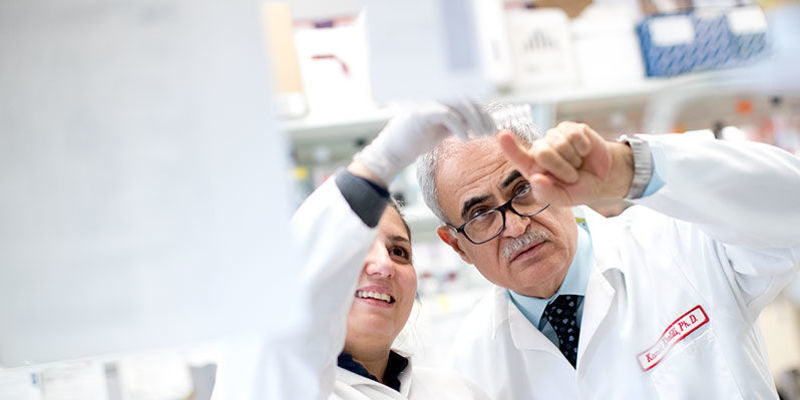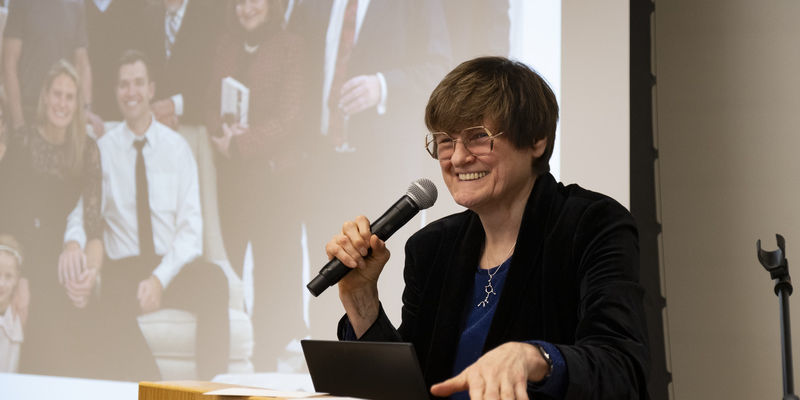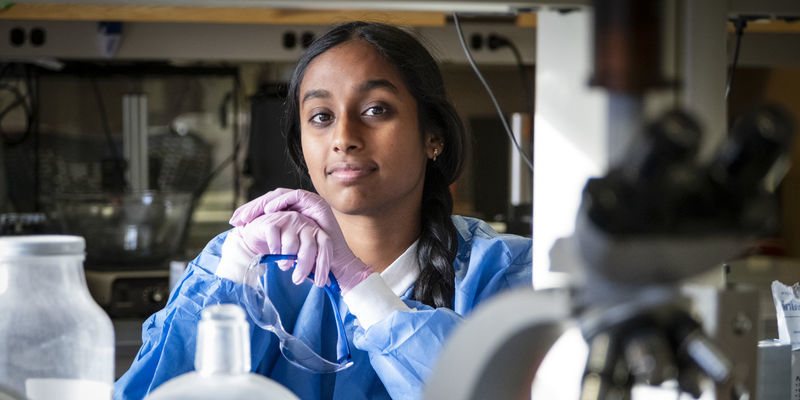Meet five of Temple’s women trailblazers in STEM
Temple is home to accomplished women faculty who are inspiring the next generation of women in STEM to shatter glass ceilings and defy expectations.
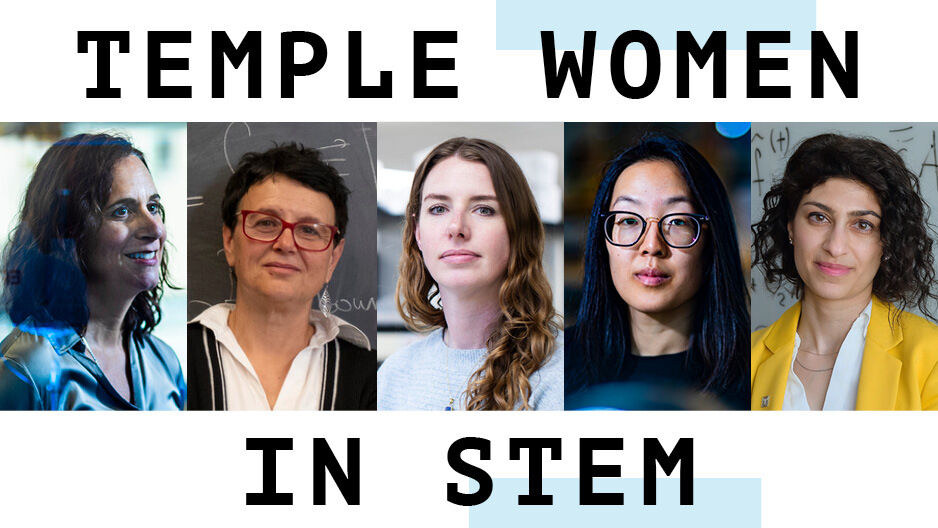
In the often male-dominated landscape of STEM, Temple University proudly boasts a talented and diverse roster of women who have carved out their niches and made lasting impacts on their respective fields.
As we celebrate Women’s History Month, we applaud our women faculty who are not only pushing the boundaries of what is known, but also inspiring the next generation of women scientists, engineers and mathematicians.
Get to know faculty members Martha Constantinou, Carol Manhart, Julie Drzymalski, Karin Wang and Irina Mitrea. From unraveling the mysteries of nuclear physics to pioneering advancements in biochemistry and mathematics, these women exemplify a Temple Made spirit of innovation, excellence and leadership.
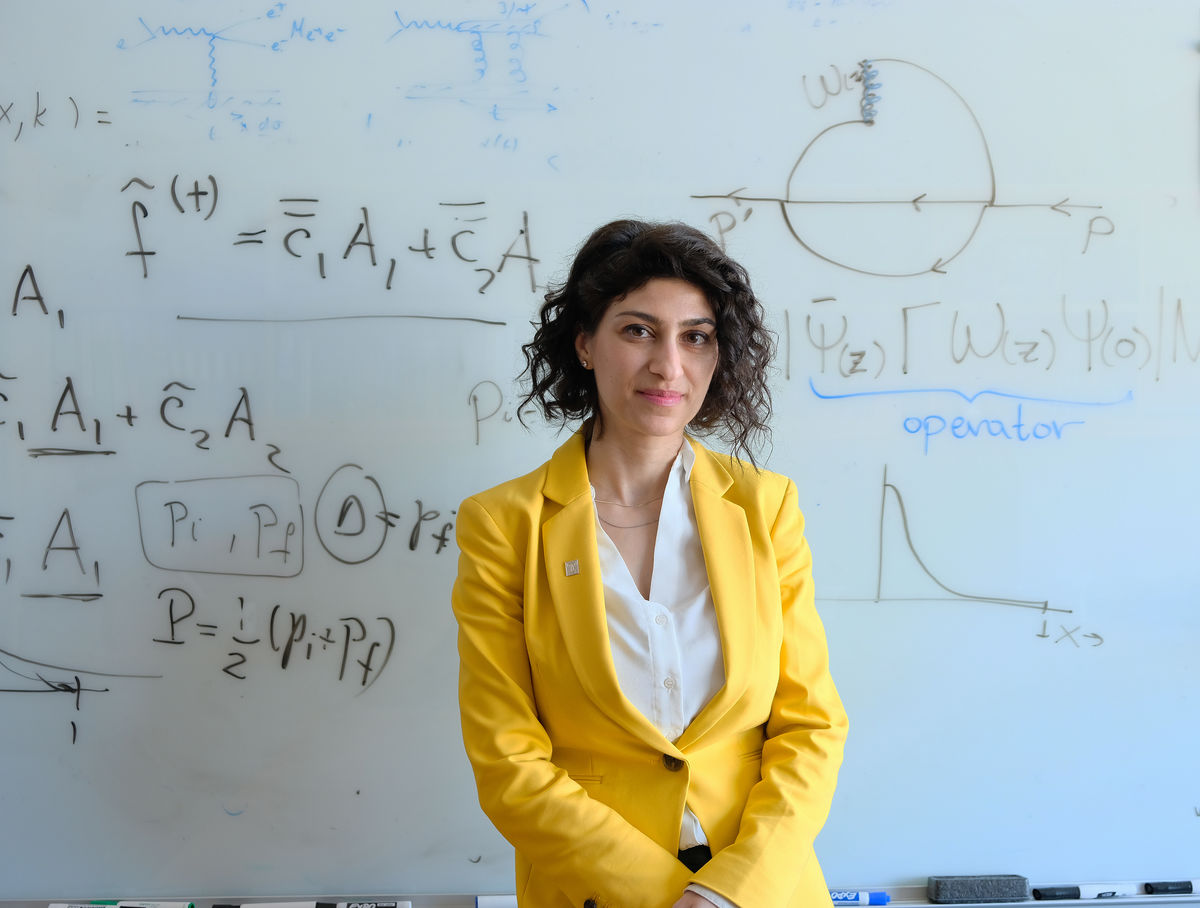
Martha Constantinou
Associate professor, vice chair of the Department of Physics, College of Science and Technology
Research focus: Using theoretical and computational nuclear physics to learn more about the fundamental particles that make up the visible universe
How it started:
As a high school student, Martha Constantinou was fascinated by everyday phenomena, such as the illusion of a broken straw in a glass of water, which can be explained by the laws of physics. This interest made her want to learn more about theoretical physics in college. She was especially intrigued by computational nuclear physics, because it combines complex theory, mathematical methods and high-performance computing. The main goal of her research is to learn more about the composition and behavior of fundamental particles that make up the visible universe.
Today, she serves as lead principal investigator for a U.S. Department of Energy-funded project to study the fundamental building blocks of the visible universe, quarks and gluons. The collaboration is a consortium of scientists from 11 universities and three national laboratories.
Constantinou’s research has been published in the Physical Review Letters of the American Physical Society, the Journal of High Energy Physics, Nature Communications and the European Physical Journal.
Courses taught: General Physics I and II for Honors students
Advice for other women in STEM:
“My experience as a woman in STEM has been influenced by a lack of female mentors in academic settings and constant advice to consider alternative career paths. Despite these challenges, I am grateful that I persisted in pursuing a career in academia. My message to all women considering a STEM field is to not let fear hold them back from following their passion and carving out their unique path.”
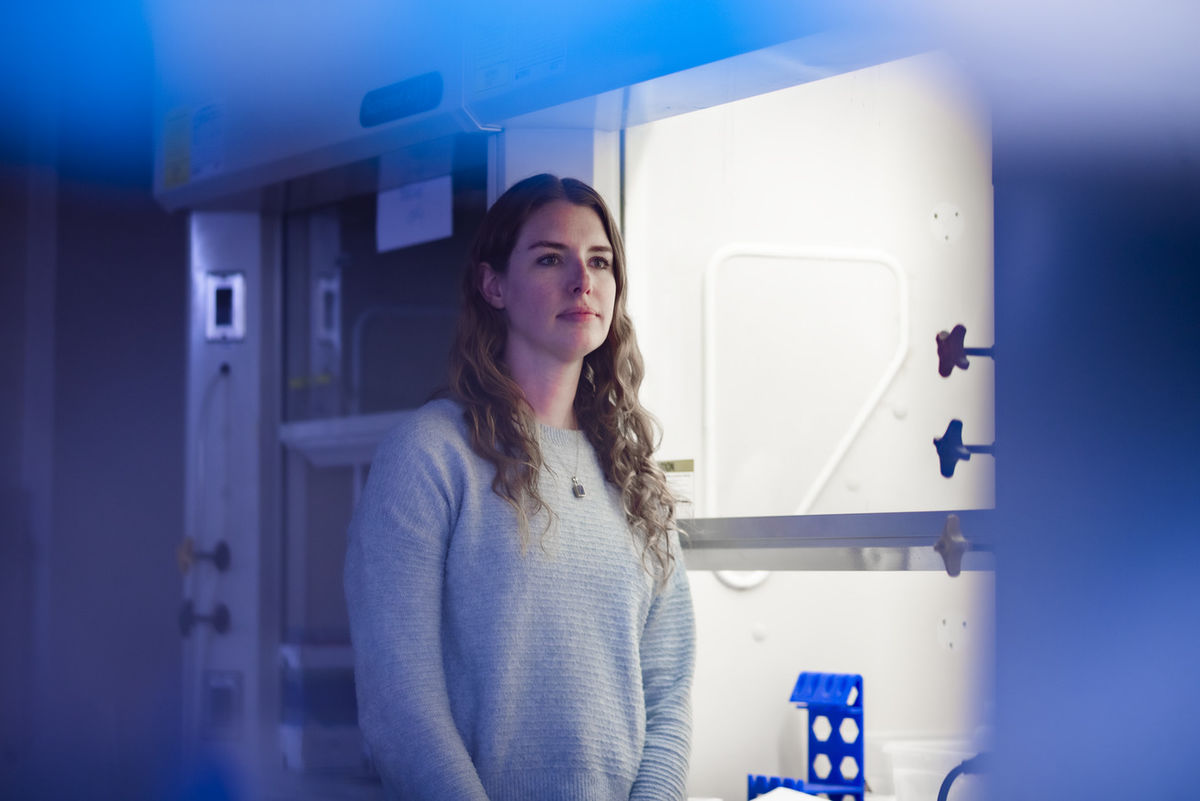
Carol Manhart
Assistant professor, Department of Chemistry, College of Science and Technology
Research focus: Using biochemistry to understand how typos are corrected during the DNA copying process and predict the likelihood of cancer developing
How it started:
Growing up, Carol Manhart was always curious about the inner workings of things around her. She recalls a vivid childhood memory in which her dad was fixing a door in their home. Manhart found herself captivated by the mechanisms of the deadbolt lock, and she felt a strong desire to dismantle it to get a better understanding of how it works.
That sense of wonder grew and intensified during her college years, particularly as she took more biology courses. Today, her work focuses on the DNA copying process. DNA uses a kind of spellchecking system involving proteins that detect, remove and correct typos that can cause mutations and lead to diseases such as cancer. Her lab uses biochemistry to understand how proteins interact with DNA to correct typos and predict the likelihood of acquiring a cancer associated with a defective protein.
Manhart’s research has been published in journals such as Encyclopedia of Biochemistry and Nucleic Acids Research.
Courses taught: Biochemistry at the undergraduate and graduate levels
Advice for other women in STEM:
“If I could offer advice to women aspiring to excel in STEM fields, I would strongly recommend seeking out mentors and sponsors. It is crucial to connect with individuals who can provide guidance and support, as well as advocate for you to flourish in your career. During my undergraduate and graduate studies, I distinctly recall being surrounded by a significant number of women in my classes, yet there were very few women professors. I remember struggling to envision myself as a STEM professor due to the scarcity of role models.”
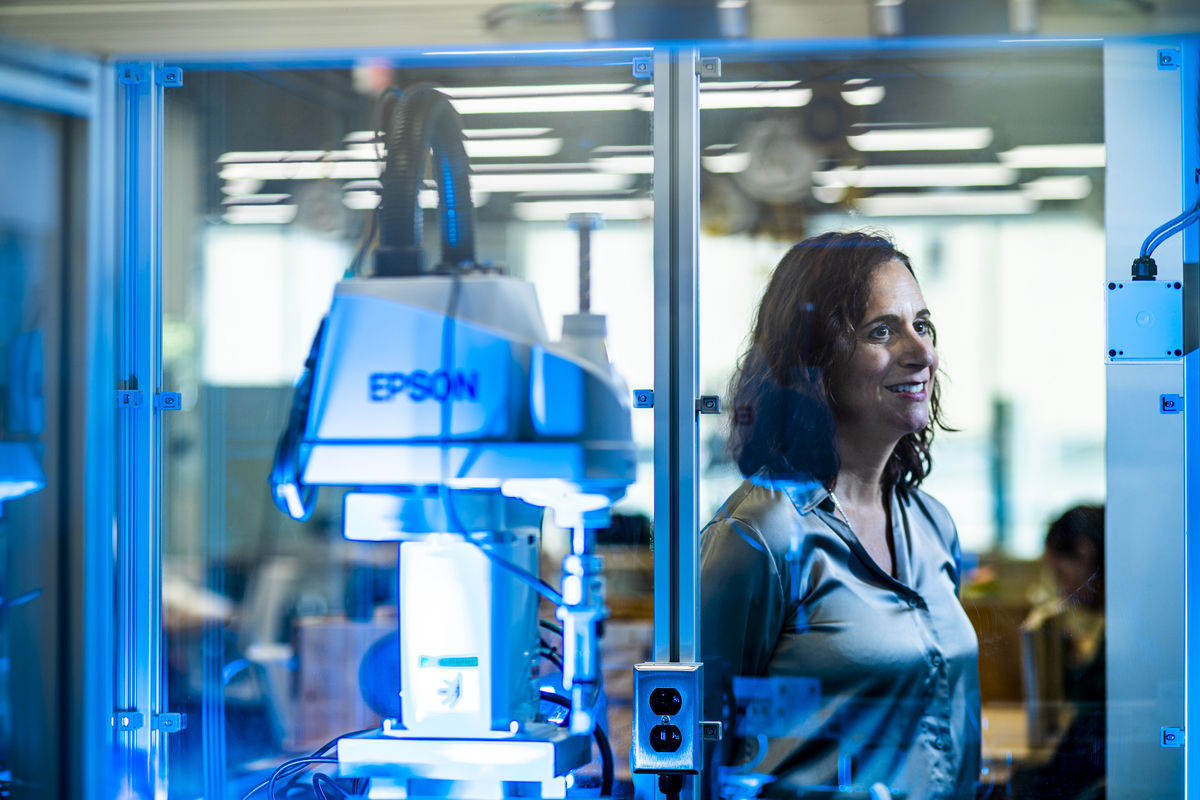
Julie Drzymalski
Professor and director, Department of Engineering, Technology and Management, College of Engineering
Research focus: Developing human-centered models to improve public services
How it started:
For many years, Julie Drzymalski worked as a construction project manager, where it was important to see the bigger picture, including how all decisions affect the outcome of a project. As she transitioned out of that industry, she knew she wanted to focus on “big picture” engineering and not on technical design. This led her to industrial and systems engineering (ISE), which involves designing, developing and optimizing systems for products and services that span many industries, such as manufacturing, defense, healthcare and finance, to name a few.
In the classroom, Drzymalski enjoys watching her students make connections between coursework and the real world. She emphasizes incorporating necessary but untraditional engineering topics into the curriculum such as human modeling, equity and artificial intelligence, to best serve her students. By introducing students to industry partners, a variety of career paths and nonstop teamwork, the College of Engineering’s ISE program creates a sense of social capital that forms a sense of community, which she believes particularly benefits women in ISE.
Her research has been published in the Journal for Systems Science and Systems Engineering, and the Proceedings for IISE International Conference and the ASEE International Conference.
Courses taught: Product Quality Assurance, Stochastic Models in Operations Research, Systems Thinking and Modeling, Industrial Simulation, and Industrial and Systems Engineering Senior Design Project I
Advice for other women in STEM:
“Understand that everyone struggles, and one mistake does not define who you are. While it may be challenging at times, do not be afraid to speak up—for yourself and for future women in STEM—and never underestimate your self-worth.”
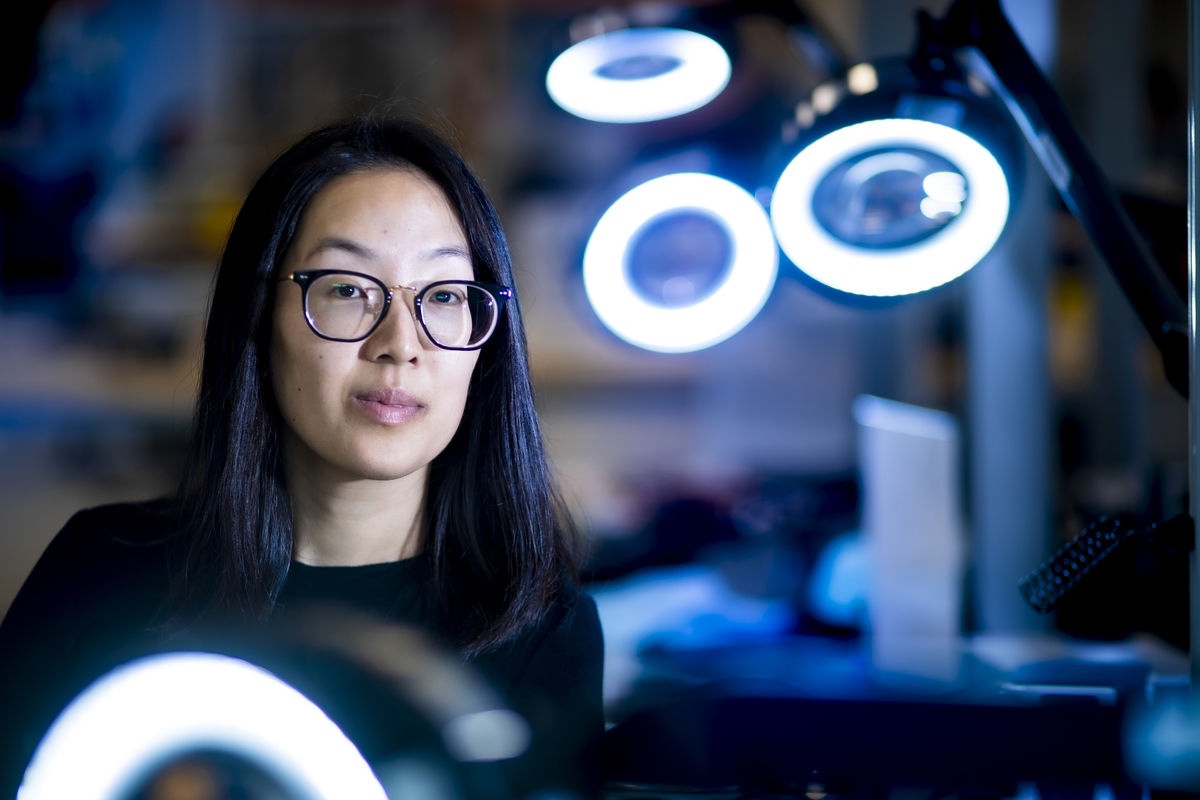
Karin Wang
Assistant professor, Bioengineering Department, College of Engineering
Research focus: Understanding how cell and matrix mechanobiology can be used in wound healing and cancer treatment
How it started:
When Karin Wang began her undergraduate studies in biomedical engineering, she did not anticipate that an introductory chemistry course would lead to collaborating with professors to create meshlike structures that help repair tissues in the body, like fixing hernias or damaged blood vessels. The experience was so rewarding that she continued to learn more about biomaterials and cell behavior, with the goal of one day running her own research lab where she could continue to ask questions about how our body maintains tissue homeostasis or drives disease progression.
Today, her work focuses on how cells create their own matrix protein scaffold networks to close wounds or to facilitate fibrosis or metastasis. In her lab, she combines engineering, materials science and cell biology to create platforms and tools that help us see how cells and matrix networks behave together. Her aim is to understand and stop harmful interactions between cells and their environment, which could lead to conditions like fibrosis or cancer.
Wang’s lab was recently awarded a Medical Research Program Grant from the W.W. Smith Charitable Trust to develop a platform that helps understand how signals from the surrounding tissue contribute to breast cancer spreading.
Her research has been published in Nature Reviews Materials, Lab on a Chip, Advanced Drug Delivery Reviews and, most recently, the American Journal of Physiology-Cell Physiology.
Courses taught: Introduction to Bioengineering, Mechanobiology and Bioengineering Graduate Seminar
Advice for other women in STEM:
“Find awesome mentors and friends, and make sure to put in the work to maintain a relationship with them. They are your network that will advocate for you, push you to overcome obstacles and celebrate successes with you.”
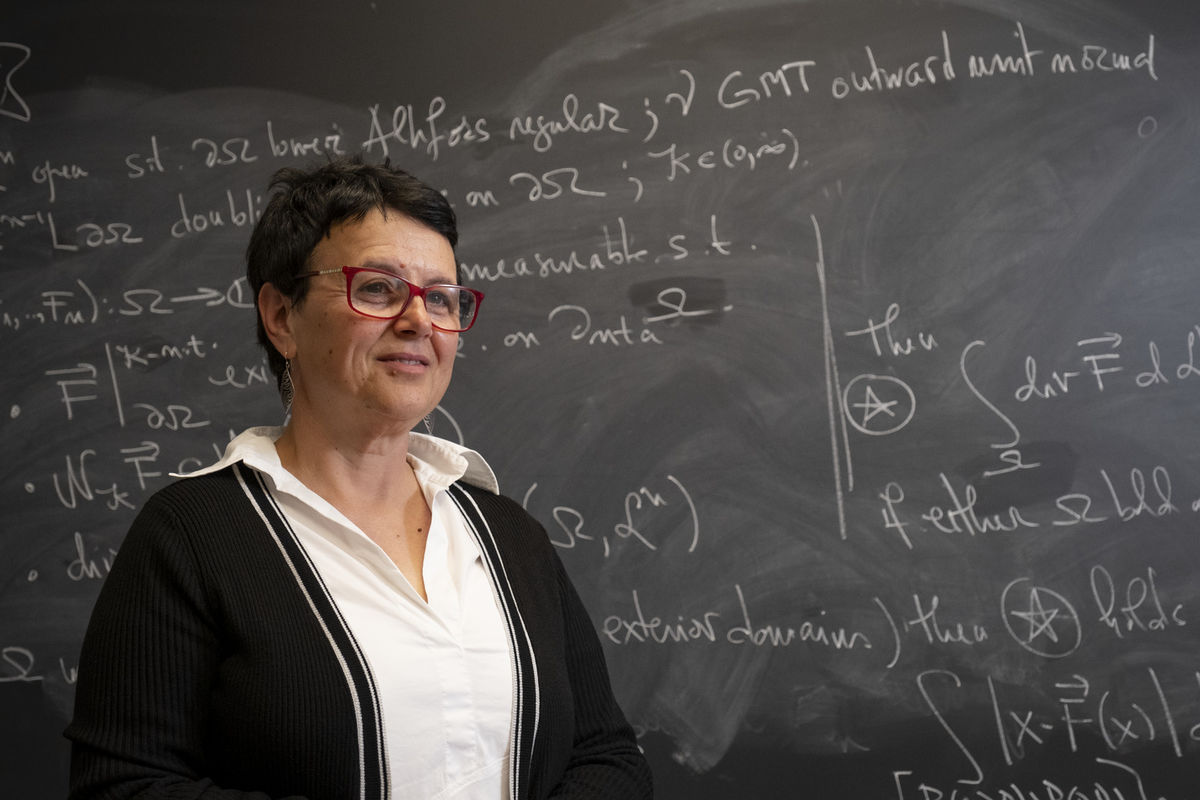
Irina Mitrea
Laura H. Carnell professor, Department of Mathematics, College of Science and Technology
Research focus: Solving complex math problems using a method called singular integral operators
How it started:
Irina Mitrea has always been interested in mathematics and fascinated by every single effort to push the boundary of what is known and understood. As she advanced in her career, she worked with mega structures and focused on bringing together different areas of math that were once thought to be separate. Figuring out how geometry, analysis and algebra can work together in unison to solve partial differential equations and model physical phenomena has been a guiding light throughout Mitrea’s career.
Today, she studies how different mathematical areas like harmonic analysis, partial differential equations and geometric measure theory come together. Her research focuses on solving complex math problems using a method called singular integral operators.
She has had more than 60 research articles published in top journals such as Advances in Mathematics, Analysis and PDE, Notices of the American Mathematical Society, and the Journal of Functional Analysis. She also recently published the Geometric Harmonic Analysis five volume series, a monumental mathematical tour de force which has been 15 years in the making. The series introduces a new and sophisticated theory for answering very difficult mathematics questions, and she expects it to serve as a platform for future research at the crossroads between geometry and harmonic analysis.
Courses taught: Advanced Calculus I and II, Partial Differential Equations, Singular Integrals for Elliptic Boundary Value Problems, and Harmonic Analysis
Advice for other women in STEM:
“Believe in yourself and always take initiative. Good things come from being proactive. Be aware that even what turns out in the end to be a bright idea starts really small and takes a lot of time to develop. Nurture those small thoughts and intuitions until they are fully formed. And surround yourself with people who support you and inspire you. I personally am so hopeful seeing the extraordinary talent of the younger generation of women in mathematics and so grateful for the work they do every day to help redraw professional norms for a more inclusive and diverse mathematical community.”
